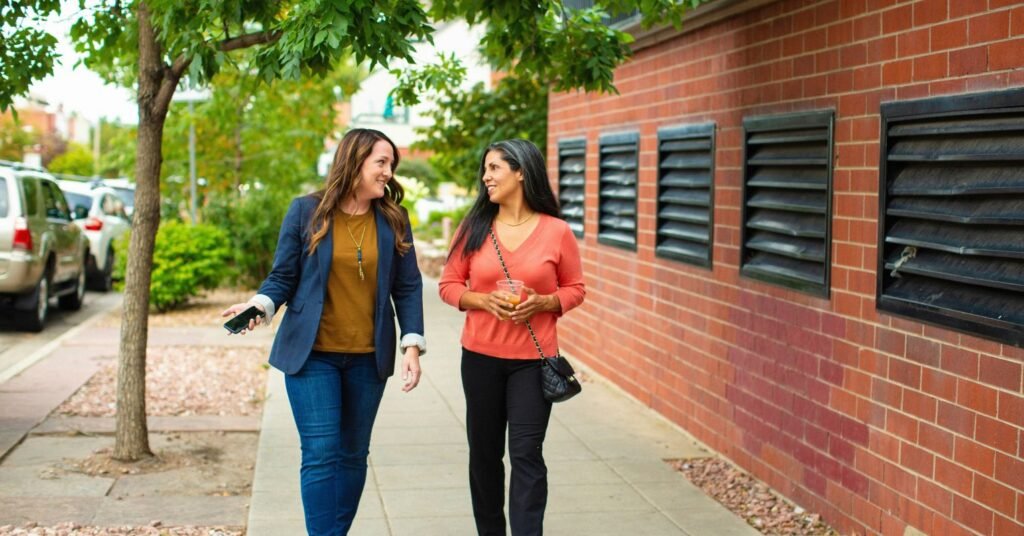Walking Meetings: Boost Creativity and Connection at Work
I have long advocated for taking “Wonder Walk” breaks between virtual meetings. But have you ever considered combining walking with a work meeting? This concept has been pondered by many, not just myself.
In a world filled with back-to-back virtual calls, the idea of stepping outside for work may seem radical. The thought of walking with a colleague, direct report, or even your boss might feel unconventional.
However, we may be overlooking a simple and effective way to enhance creativity, foster connections, and promote well-being in the workplace. As the renowned German philosopher Friedrich Nietzsche once said, “It is only ideas obtained by walking that have any worth.”
Recent studies have shown that walking not only boosts individual creative thinking but also helps reduce stress, elevate mood, and strengthen work relationships when practiced collectively in a work setting.
Why should you consider walking at work?
Encourage Collective Creativity:
A 2014 Stanford study revealed that participants who walked, whether on a treadmill or outdoors, generated significantly more original ideas than those who did not. Creativity increased by over 80%, with outdoor walkers, especially those who meandered rather than walked in a straight line, producing the most innovative ideas.
A 2024 assessment published in Discover Psychology further confirmed that low-intensity, natural walking enhances originality and diverse thinking. These cognitive functions are crucial for idea generation, problem-solving, and innovation. The positive effects are noticeable even after just a few minutes of walking.
But what about walking with others at work?
Enhance Mental Well-being and Connection:
A pilot study conducted in 2022 by Anna Bornioli and published in Cities and Health explored the impact of walking meetings among university professionals. Participants reported feeling more relaxed and energetic, with improvements in creative thinking and reduced social isolation. Walking meetings were found to support mental and emotional health, especially for remote or hybrid teams. Participants identified silent, natural, and traffic-free walking routes as ideal environments.
Improve Physical Health and Posture:
A randomized controlled study in 2024 compared office yoga with walking and found that walking was more effective in reducing musculoskeletal complaints. While the effect size was modest, the benefits of short outdoor walks during the workday for physical well-being were evident.
Reduce Burnout and Enhance Workplace Posture:
A 2021 study published in the Journal of Environmental Psychology followed employees with stress-related complaints who participated in walk-and-talk coaching sessions in nature. Compared to a control group, participants reported significant improvements in areas such as mental health, job satisfaction, and self-esteem. While immediate physical health benefits were not observed, the positive impact on mental health was substantial and enduring.
Suggestions for Implementing Walking Meetings:
Choose the Right Environment:
Walking outdoors, especially in green or quiet spaces, has been shown to yield better results than indoor walking. Identify safe, natural routes near your workplace to provide the psychological boost needed for creativity and connection.
Maintain a Manageable Pace and Duration:
Low-intensity walking for even just a few minutes has been shown to enhance creative thinking. Consider starting with 10 to 20-minute walking meetings to allow for new ideas and meaningful conversations.
Initiate with a Prompt:
Kick off your walking meeting with a structured question or theme to guide the conversation, especially if this is not a common practice. Using a shared topic can help facilitate a productive discussion.
Ensure Inclusiveness and Clarity:
Consider the comfort and safety of all employees when proposing walking meetings. Take into account factors such as mobility, weather, clothing, and personal safety. Walking side by side can help reduce hierarchy and alleviate the pressure often associated with face-to-face meetings.
Try incorporating a short walk with a colleague or direct report in your upcoming week. You may not only return with fresh ideas but also with a deeper sense of clarity and connection with your work and those around you.

